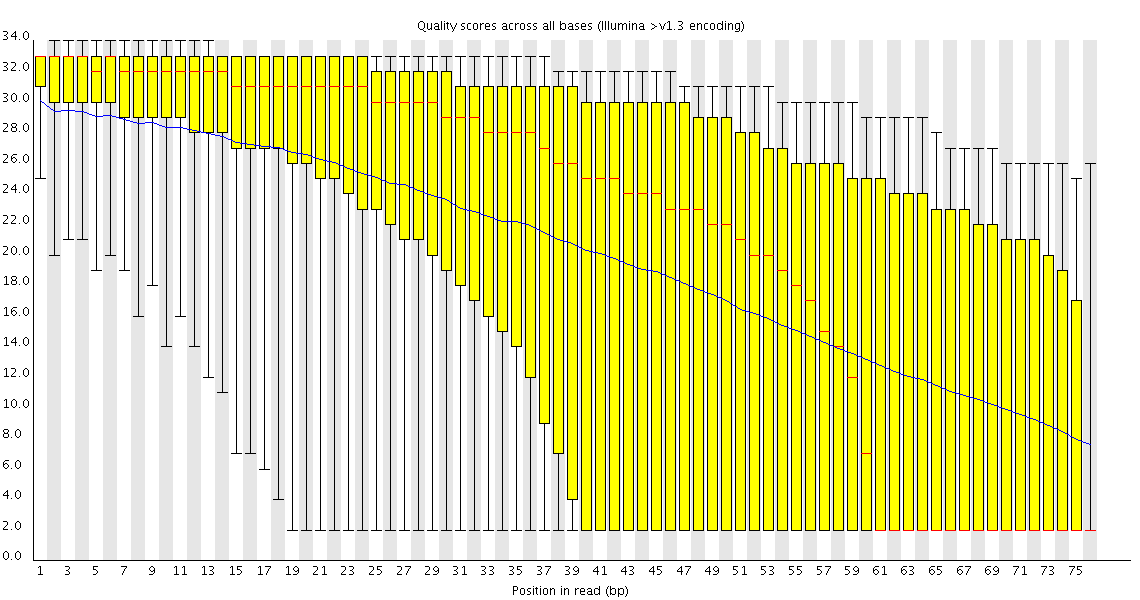Dear users,
I am running the same commands for a set of four paired-end lanes in tophat and cufflinks. But when running cufflinks on the tophat .bam output, some of the lanes are detected as single-end while others are correctly detected as paired-end. How could this be? I show you the commands for the first lane which is wrongly detected with cufflinks stdout
$ tophat -r 200 -p 8 --mate-std-dev 40 --solexa1.3-quals --library-type fr-unstranded -o ./tophat_s1 -g 1 a_thaliana /Data/s_1_1_QC_sequence.fq /Data/s_1_2_QC_sequence.fq
$ cufflinks -o ./tophat_s1/cufflinks -p 8 -N --library-type fr-unstranded ./tophat_s1/accepted_hits.bam
[12:02:53] Inspecting reads and determining fragment length distribution.
> Processed 35625 loci. [*************************] 100%
> Map Properties:
> Upper Quartile Mass: 444119.98
> Read Type: 105bp single-end
> Fragment Length Distribution: Gaussian (default)
> Estimated Mean: 217.34
> Estimated Std Dev: 65.65
[12:03:32] Assembling transcripts and estimating abundances.
> Processed 35657 loci. [*************************] 100%
Your comments are greatly appreciated.
Thanks
D.
Edit: my program versions:
TopHat (v1.1.4)
Bowtie version: 0.12.7.0
Samtools version: 0.1.11.0
Cufflinks version: 0.9.2
I am running the same commands for a set of four paired-end lanes in tophat and cufflinks. But when running cufflinks on the tophat .bam output, some of the lanes are detected as single-end while others are correctly detected as paired-end. How could this be? I show you the commands for the first lane which is wrongly detected with cufflinks stdout
$ tophat -r 200 -p 8 --mate-std-dev 40 --solexa1.3-quals --library-type fr-unstranded -o ./tophat_s1 -g 1 a_thaliana /Data/s_1_1_QC_sequence.fq /Data/s_1_2_QC_sequence.fq
$ cufflinks -o ./tophat_s1/cufflinks -p 8 -N --library-type fr-unstranded ./tophat_s1/accepted_hits.bam
[12:02:53] Inspecting reads and determining fragment length distribution.
> Processed 35625 loci. [*************************] 100%
> Map Properties:
> Upper Quartile Mass: 444119.98
> Read Type: 105bp single-end
> Fragment Length Distribution: Gaussian (default)
> Estimated Mean: 217.34
> Estimated Std Dev: 65.65
[12:03:32] Assembling transcripts and estimating abundances.
> Processed 35657 loci. [*************************] 100%
Your comments are greatly appreciated.
Thanks
D.
Edit: my program versions:
TopHat (v1.1.4)
Bowtie version: 0.12.7.0
Samtools version: 0.1.11.0
Cufflinks version: 0.9.2

Comment